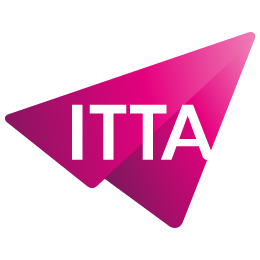Home > Trainings > Collaborative Tools > Project management > Microsoft Shifts – Get Started
This training provides participants with the knowledge and skills needed to use Shifts effectively in their daily work. Integrated into Microsoft Teams, this tool allows you to schedule shifts, manage rotations, and track employee attendance with ease.
Efficiently manage your schedules with Microsoft Shifts
Designed for team leaders, managers, and Microsoft 365 users, this course guides you step by step through mastering Microsoft Shifts. You will learn how to create schedules, organize teams into groups, assign tasks, and track working hours directly within Teams. With its clear and intuitive interface, Microsoft Shifts centralizes all essential information to simplify time and resource management.
Schedule management is a cornerstone of modern business organization. With the rise of hybrid work and diverse schedules, having a centralized, reliable, and collaborative tool has become essential. Shifts meets this need by integrating scheduling directly into Microsoft Teams. This approach unifies communication, notifications, and time management within a single platform already used by millions of people. By taking a Shifts training course, participants learn how to turn a simple tool into a true driver of collective performance.
Microsoft Shifts was designed to facilitate coordination between frontline teams, managers, and HR departments. It provides a clear view of who is working, when, and on which position. This reduces human error, improves communication, and ensures business continuity. In practice, it allows users to modify a schedule, adjust a rotation, or anticipate an absence without wasting time informing each team member individually.
The strength of Shifts lies in its simplicity and flexibility. Unlike external solutions or Excel spreadsheets, it requires no installation or complex configuration. Everything is managed within the Microsoft 365 environment. Managers can create a schedule, assign team members, define roles, and even import existing data. This centralization helps standardize work methods and maintain consistency across departments.
During Shifts training, participants learn how to structure schedules based on team size and activity type. They discover how to segment groups, view shifts by day or by employee, and use advanced filters to save time. This organization improves task distribution and provides better visibility into employee availability.
Shifts is more than just a scheduling tool—it’s a collaborative space. By integrating it with Microsoft Teams, Microsoft simplifies communication between managers and employees. Team members can view their schedules, request changes, or offer shift swaps. Managers receive instant notifications and can approve or decline requests without leaving Teams. This process fosters clear communication, reduces misunderstandings, and improves employee satisfaction.
The Shifts training also covers best practices for managing these interactions. Understanding how to configure permissions, manage access rights, and define clear rules helps avoid confusion and improve efficiency. These skills are essential for organizations with multiple teams working across various sites or time zones.
The built-in time clock feature in Microsoft Shifts is a major advantage. It allows employees to clock in and out directly from their mobile devices. Managers then have access to accurate, real-time data on hours worked. This accuracy simplifies time tracking, report generation, and absence management. Instead of using manual sheets or costly external systems, everything is now centralized within Teams.
Shifts-trained users also learn how to use attendance reports and performance indicators. These insights provide a comprehensive view of productivity, activity peaks, and staffing needs. This analytical approach helps organizations better anticipate resource requirements and improve long-term planning.
One of Shifts’ greatest strengths is its deep integration with the Microsoft 365 ecosystem. Information flows in real time between Teams, Outlook, and SharePoint. For example, a schedule change can automatically trigger a notification in Teams and update the Outlook calendar. This interoperability strengthens internal process consistency and reduces administrative workload. Managers can then focus on analysis and strategy rather than manual data entry.
In addition, Power Automate takes automation even further. Advanced users can create workflows to automate repetitive tasks, such as sending shift reminders or alerts when schedules are modified. These automations enhance responsiveness and reliability in daily operations.
Is Microsoft Shifts available for all Teams users?
Yes, Shifts is included in Microsoft Teams for Microsoft 365 subscribers. No additional installation is required.
Can Shifts data be exported to Excel?
Yes, you can export schedules and time reports to Excel for further analysis or data archiving.
Does the time clock feature comply with labor regulations?
Yes, Shifts’ time tracking records hours accurately and can be configured according to company policies and legal standards.
Can employees view their schedules on mobile devices?
Yes, Shifts has a user-friendly mobile app that allows employees to access their schedules anytime, even on the go.
Can Shifts handle rotating or shift-based teams?
Absolutely. The tool is designed to manage various team types, whether they work day, night, or rotating shifts.
What are the main benefits of Shifts training?
It saves time, improves internal communication, and ensures better consistency in schedule management.
How long does it take to master Shifts?
Only a few hours are needed to learn the basics. With regular use, participants can fully leverage its potential.

Nous utilisons des cookies afin de vous garantir une expérience de navigation fluide, agréable et entièrement sécurisée sur notre site. Ces cookies nous permettent d’analyser et d’améliorer nos services en continu, afin de mieux répondre à vos attentes.
Monday to Friday
8:30 AM to 6:00 PM
Tel. 058 307 73 00
ITTA
Route des jeunes 35
1227 Carouge, Suisse
Monday to Friday, from 8:30 am to 06:00 pm.